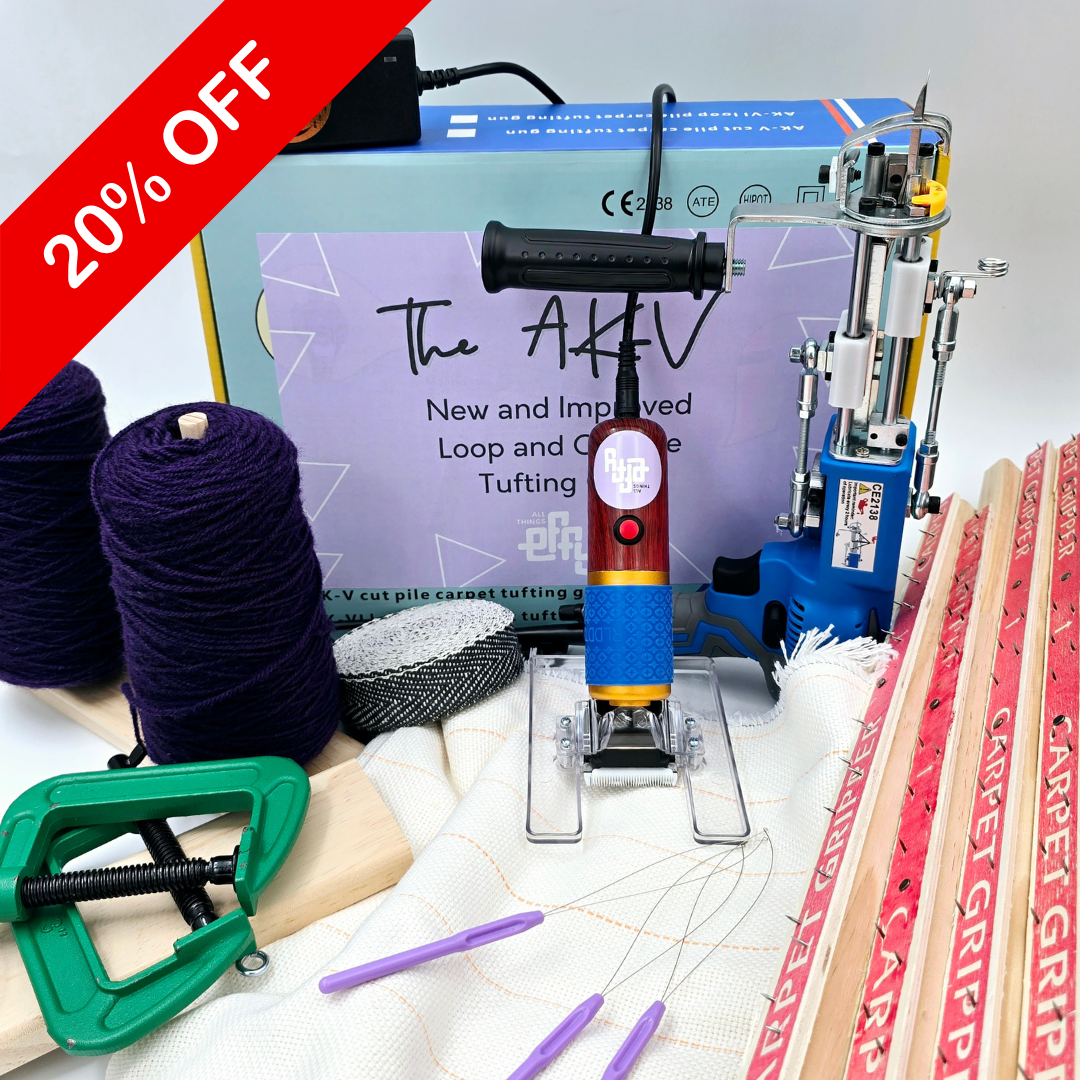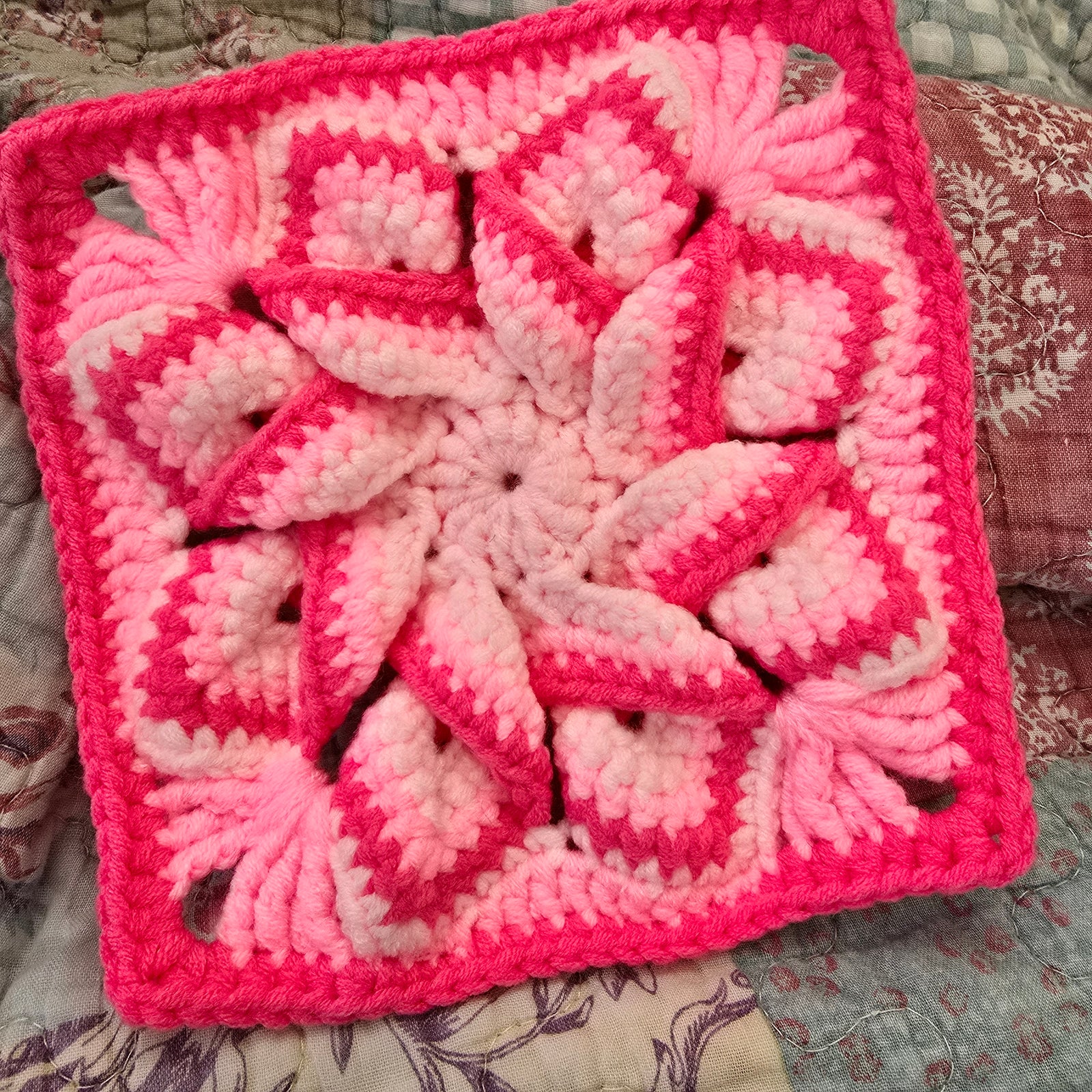Getting started
Punch the needle in the cloth *firmly* before pulling the trigger.
Always move upwards toward the closed side of the needle tip with the gun at a 90 degrees angle to the cloth.
You can make a horizontal by turning the gun horizontal.
When making curves rotate the gun with the curve and do the curve slowly in spurts - this give you more control
Again always push firmly into the fabric. This is no time to be delicate. If your setup is correct then your cloth can handle this pressure.
If the cloth becomes loose, stop and stretch the cloth.
What width do I leave between rows?
There is no hard and fast rule here. You may like to do a few practice runs, stop and go and check the front to see if it is how you would like it. (Ideally, no cloth should be showing.)It is generally recommended to have the rows as close as possible, but without them overlapping.
If the gap between the rows is too wide when you check the front you will be able to see the cloth. If this happens you can simply put a row in between.
If you have overlapped the rows or they are too close, when you check the front it may look matted. In this case you can pull out any extra (if it is cut pile). If loop pile you can cut the loops with scissors and pull any you don't want out.
Punch the needle in the cloth *firmly* before pulling the trigger.
Always move upwards toward the closed side of the needle tip with the gun at a 90 degrees angle to the cloth.
You can make a horizontal by turning the gun horizontal.
When making curves rotate the gun with the curve and do the curve slowly in spurts - this give you more control.
Again always push firmly into the fabric. This is no time to be delicate. If your setup is correct then your cloth can handle this pressure.
If the cloth becomes loose, stop and stretch the cloth.
What width do I leave between rows?
There is no hard and fast rule here. You may like to do a few practice runs, stop and go and check the front to see if it is how you would like it. (Ideally, no cloth should be showing.) It is generally recommended to have the rows as close as possible, but without them overlapping.
If the gap between the rows is too wide when you check the front you will be able to see the cloth. If this happens you can simply put a row in between.
If you have overlapped the rows or they are too close, when you check the front it may look matted. In this case, you can pull out any extra (if it is cut pile). If loop pile you can cut the loops with scissors and pull any you don't want out.





